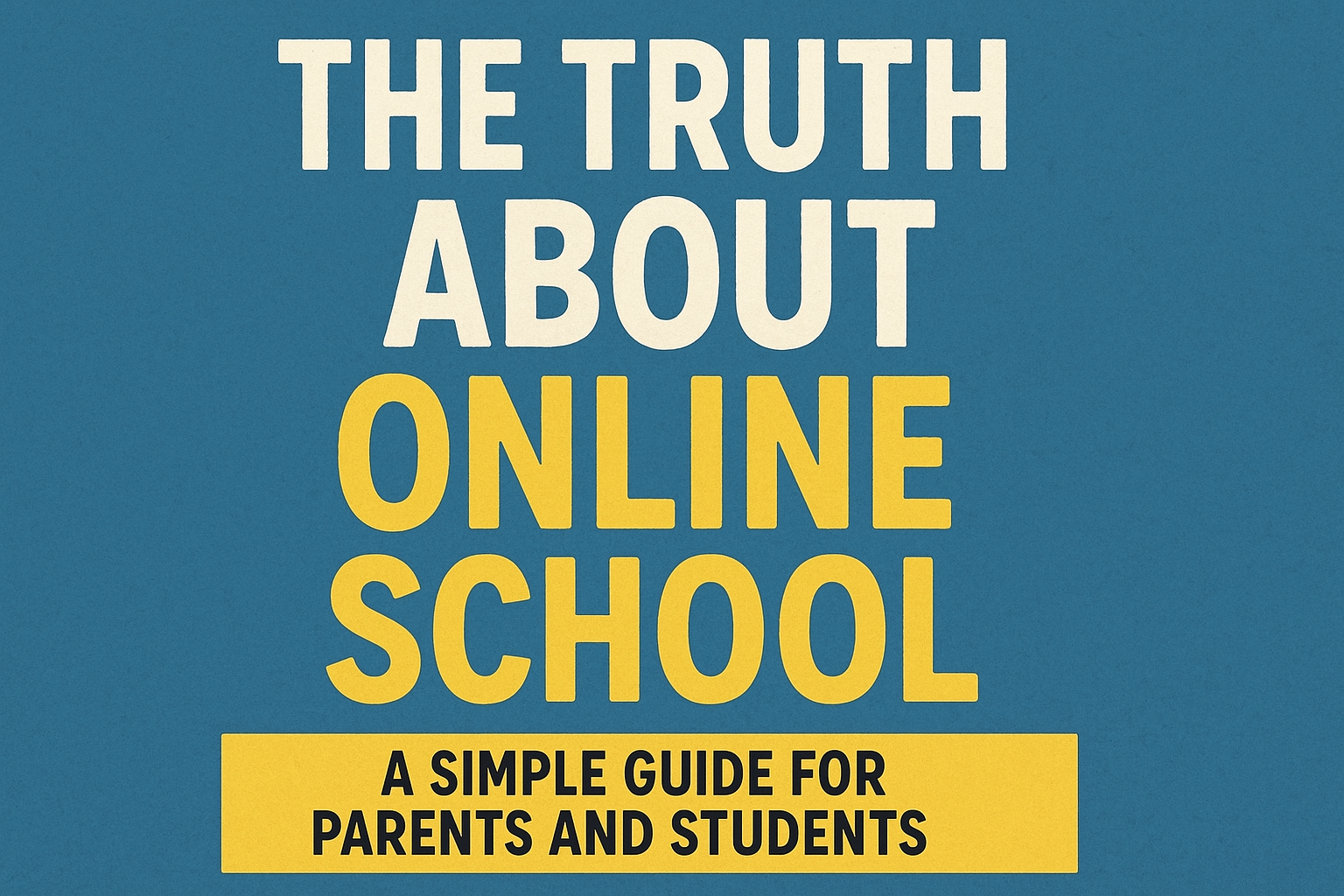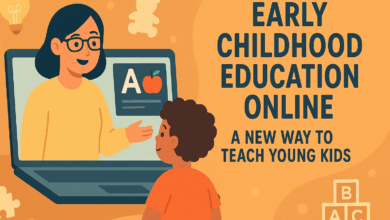The Truth About Online School: A Simple Guide for Parents and Students

Online school is changing how students learn. It’s not just a backup plan anymore. More families are choosing it because of flexibility, better access to teachers, and safer learning spaces. If you’re new to this idea, this guide will help you understand what online school really means.
What Is Online School?
Online school gives students lessons through the internet. There are no classrooms or chalkboards. Lessons can be live or pre-recorded. Assignments are turned in online. Tests are taken at home or through secure apps. Students talk to teachers using video calls or messages. Some schools have set times for class. Others let students work when they want. Both types are valid. It depends on what works best for each student.
Online schools can be public, private, or part of a college. Public ones are free. Private ones cost money. College programs give degrees like traditional schools do. This setup helps kids who move often, have health issues, or need a different pace. It also helps parents who want more control over their child’s education.
Why Families Choose Online School
Many families choose online school for good reasons. Here are some of the most common:
Flexibility
Kids can learn anytime. This is great for families that travel or have busy schedules. You don’t have to worry about missing school if you’re out of town.
Personal Learning Pace
Some students learn fast. Others need more time. Online school lets them go at their own speed. They can review tough topics or skip ahead if they already know the material.
Better Access to Teachers
Some areas don’t have strong schools. Online school connects students with top teachers from anywhere. That means better lessons and support.
Safer Environment
Bullying is a real problem. Online school cuts out many of those issues. Kids can focus on learning without stress.
Customized Learning
Parents can mix and match classes. For example, one child might take math online and music in person. Another might do all classes online. It’s up to the family. These reasons make online school a smart choice for many. But it’s not perfect for everyone.
What Are the Challenges of Online School?
Online school has downsides too. Knowing these helps families decide if it’s right.
Self-Discipline Needed
There’s no teacher watching every minute. Students must stay on task. Without structure, some fall behind.
Less Social Time
School isn’t just about books. It’s where kids make friends and learn teamwork. Online school limits face-to-face time. Some programs offer virtual clubs. Others partner with local groups for events.
Tech Dependence
A stable internet connection and a good device are needed. Not every family has that. Schools sometimes provide tools, but it’s still a barrier.

Quality Varies
Not all online schools are equal. Some have poor teaching or outdated materials. Always check reviews and accreditation before signing up.
Communication Gaps
It’s easier to misunderstand things online. A quick message might sound harsh. Video calls help, but they aren’t always enough. Knowing these challenges helps families prepare. With the right mindset, these issues can be managed.
Types of Online Schools
There are many kinds of online schools. Each fits different needs.
K-12 Charter Schools
These are free public schools. They follow state standards. Most have live classes and structured schedules. These are good for full-time online learning.
Private Online Schools
These charge tuition. They may offer advanced courses or special methods. Some follow religious teachings. Others focus on gifted learners.
University Programs
Colleges now offer full degrees online. These are for high school graduates or adults going back to school. Credits transfer like regular classes.
Vocational Training
These programs teach job skills. Examples include coding, nursing, and electrician training. They are short and focused.
Homeschool Platforms
These help parents who teach their kids. They provide lesson plans and grading tools. Parents handle the teaching, but the platform offers support. Each type has pros and cons. Pick the one that matches your goals.
How Online School Compares to Traditional School
How does online school stack up against in-person learning? Let’s look at key points.
Traditional schools offer daily social contact and clear routines. Online schools give freedom and custom learning. Which is better? It depends on the student. Shy kids might thrive online. Active learners may prefer hands-on classes. Think about what works best for your situation.
Read more: Techtool Supply: What It Is and Why It Matters
Tips for Success in Online School
Here’s how to make online school work well:
Set Up a Learning Space
Use a quiet spot for schoolwork. Keep it clean and distraction-free. Have a desk, chair, and good lighting.
Make a Routine
Even if the school allows flexible hours, stick to a schedule. Wake up at the same time. Start lessons by a set hour. This builds good habits.
Use a Planner
Track due dates and tests. Many online schools have built-in calendars. Paper planners work too. Staying organized helps avoid missed work.
Talk to Teachers
Ask questions early. Don’t wait until you’re stuck. Teachers can explain things again or offer extra help.
Limit Distractions
Turn off phone notifications. Close unrelated browser tabs. Let others in the house know when you’re in class.
Join Groups
Look for study groups or virtual clubs. Talking with peers keeps you motivated and connected. With these steps, online school becomes easier and more effective.
The Future of Online School
What’s next for online school? Here are trends to watch.
Better Tools
New tech is making lessons more interactive. Virtual reality lets students explore space or history. AI tutors give instant feedback.
Hybrid Models
Some schools mix online and in-person learning. This gives flexibility with social time. It’s growing fast.
Focus on Equity
More schools are helping low-income families get devices and internet. This makes online learning fairer.
Job Skills Online
Short-term online certifications are gaining value. Employers now accept them as proof of skill. As tech improves, online school will become even more common. It’s not just a trend—it’s a lasting change in education.
Final Thoughts
Online school is here to stay. It gives families more choices. It helps kids learn in ways that fit their lives. It’s not perfect for everyone. But with planning and effort, it can be a great path. Whether you’re starting school or going back later in life, online options are worth exploring. If you’re unsure, start small. Try one class. See how it feels. Then decide if it’s right for you or your child.
Read more: What You Need to Know About COVID-19 Travel Insurance
Frequently Asked Questions (FAQ)
Q: Are online schools accredited?
Yes, many are. Check the school’s website or contact your state’s education department to confirm.
Q: Can I get a diploma from online school?
Yes. Accredited online schools issue diplomas just like traditional ones.
Q: How much does online school cost?
Public charter schools are free. Private schools and college programs vary in price.
Q: Is online school good for every student?
No. It works best for self-motivated learners. Shy or easily distracted kids may struggle.
Q: Do colleges accept online credits?
Most do, if the school is accredited. Always confirm with the college before enrolling.
Q: Can my child join sports or clubs?
Some online schools offer virtual clubs. Others partner with local teams or organizations.

